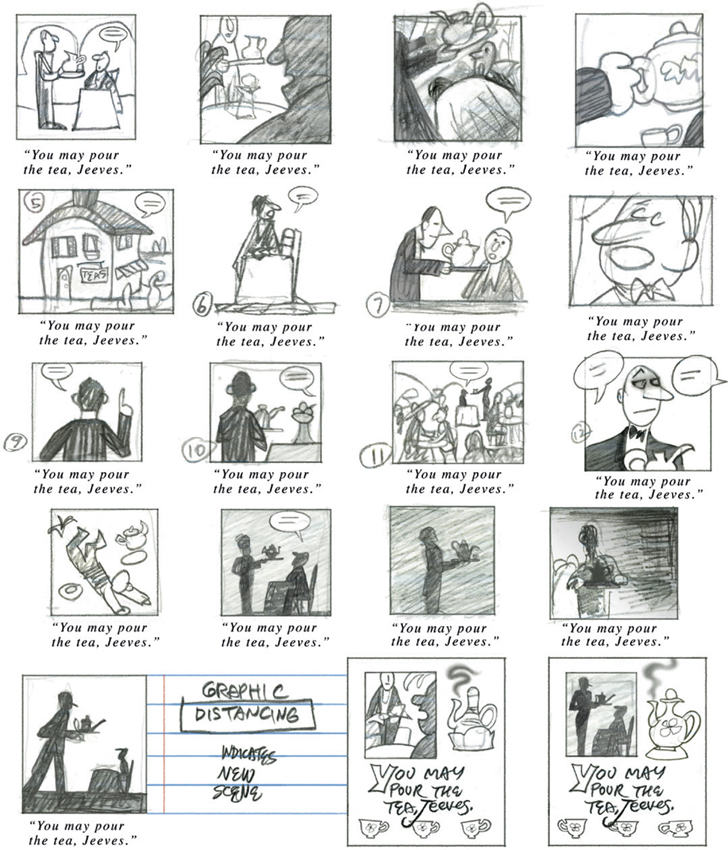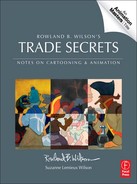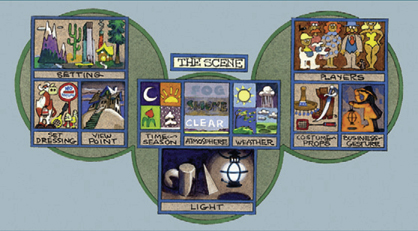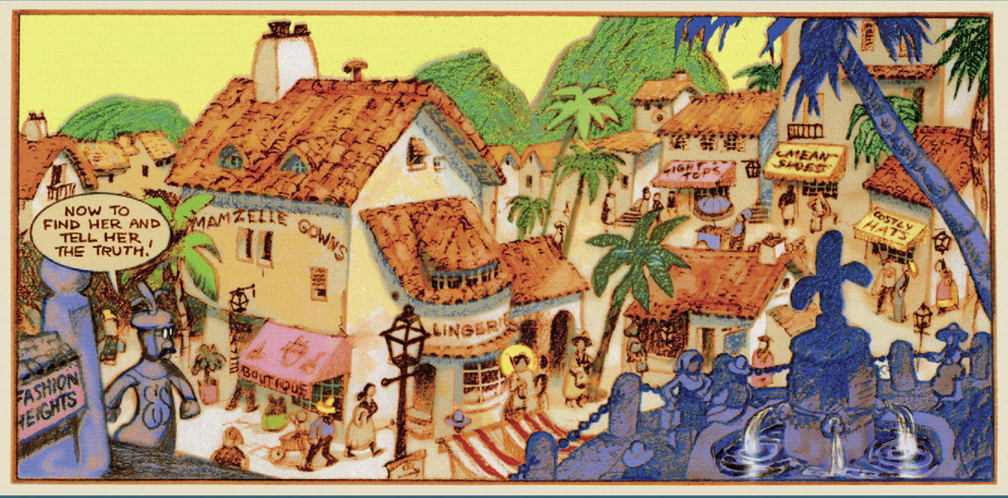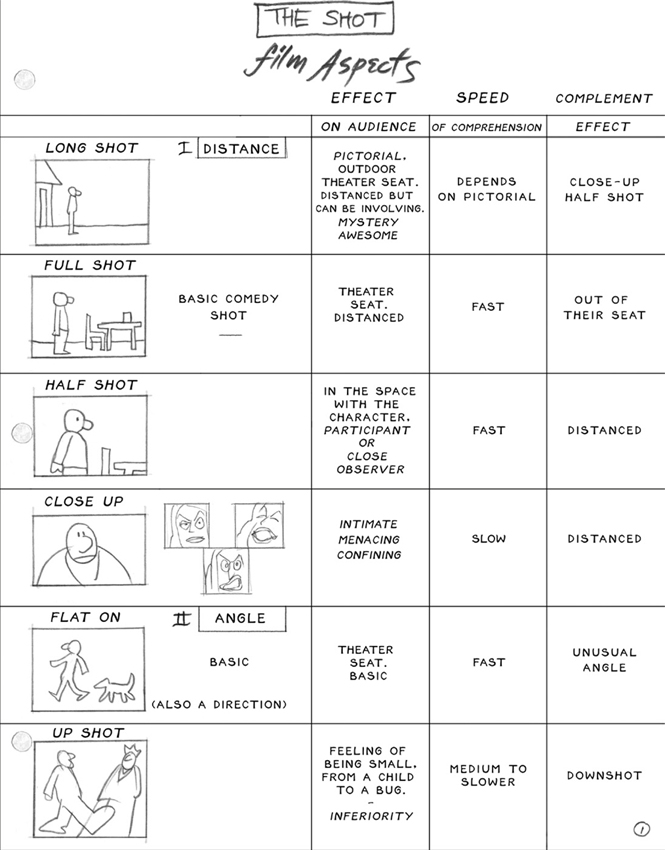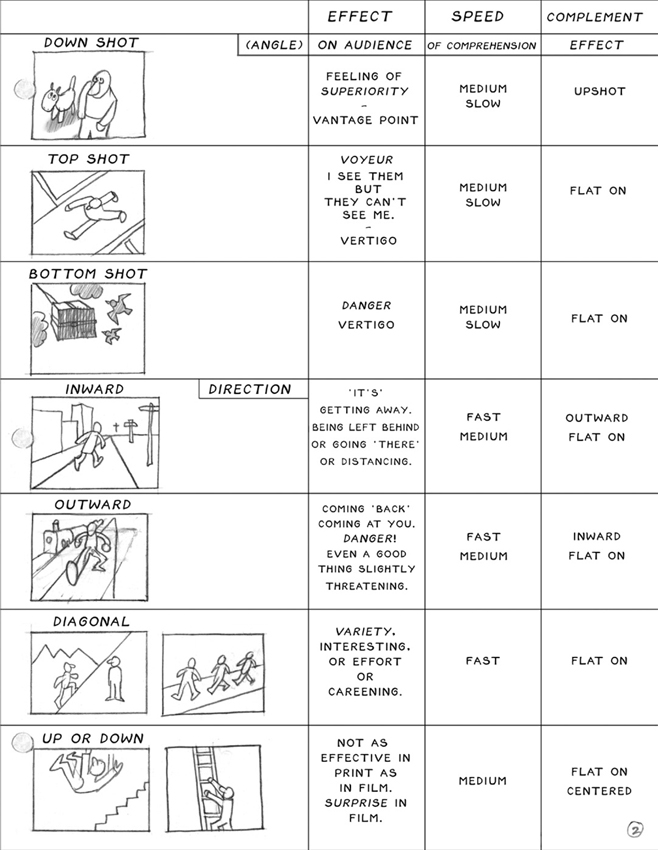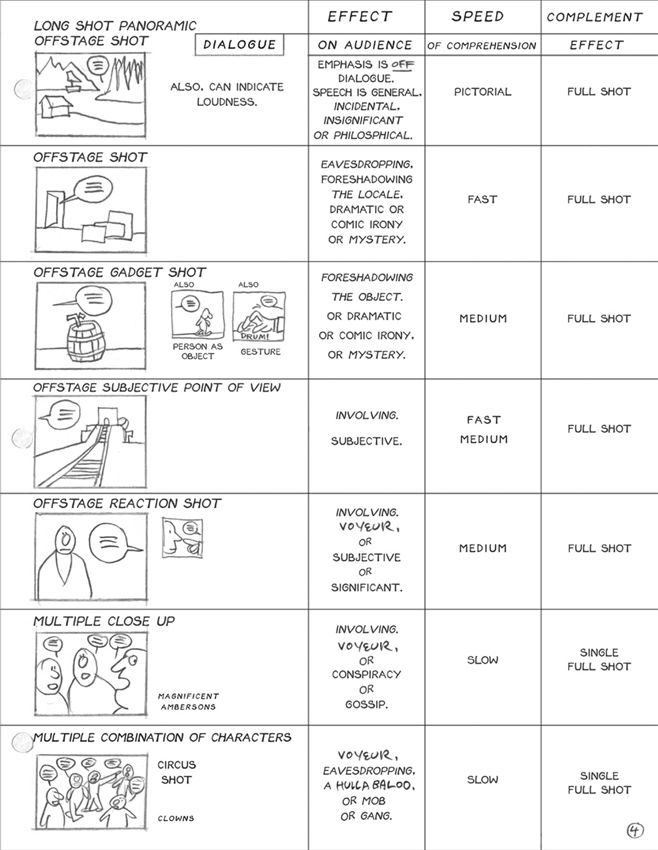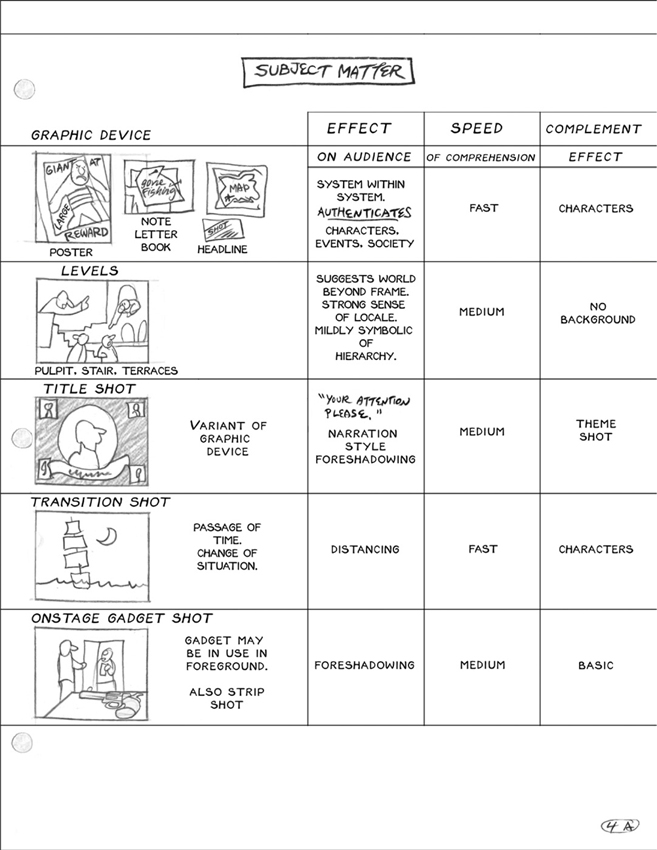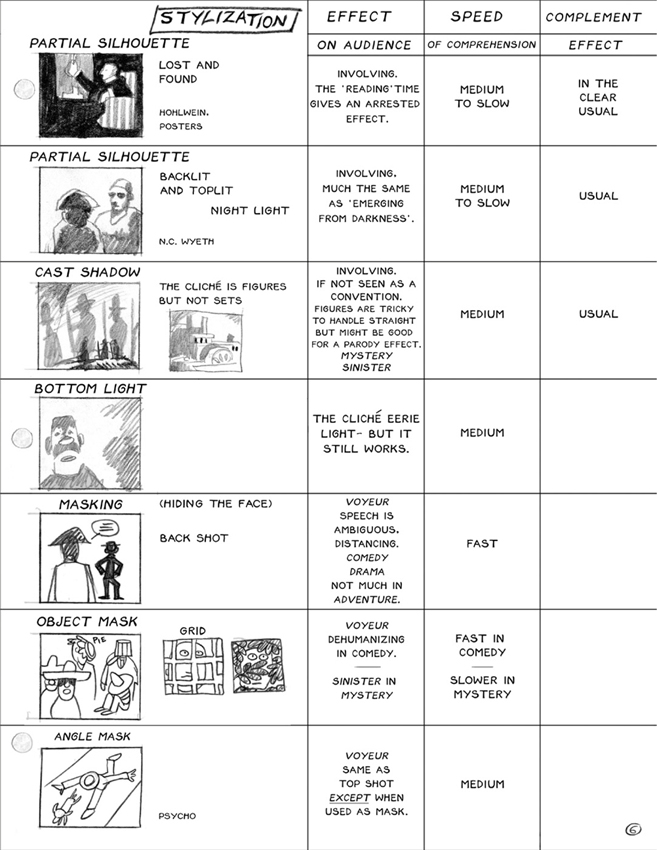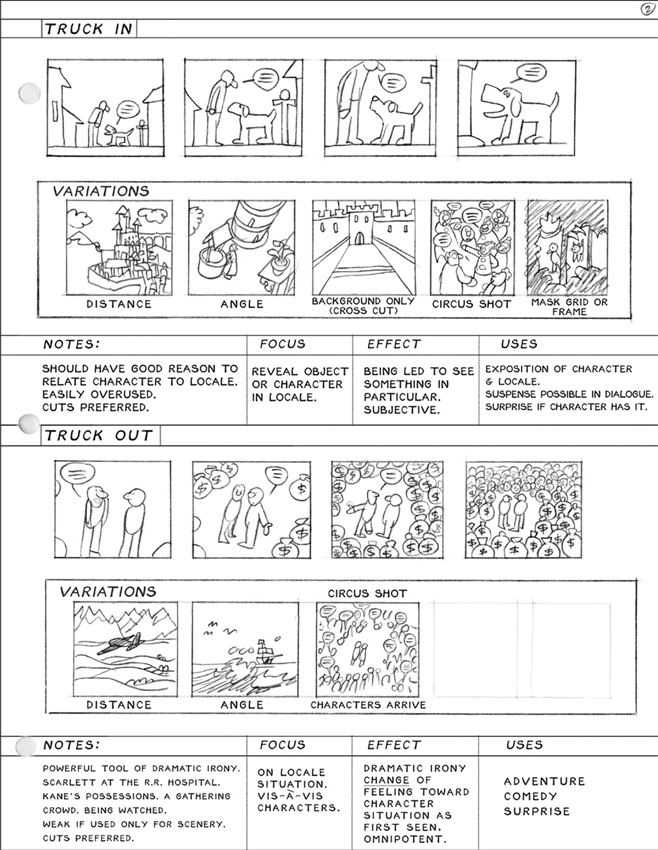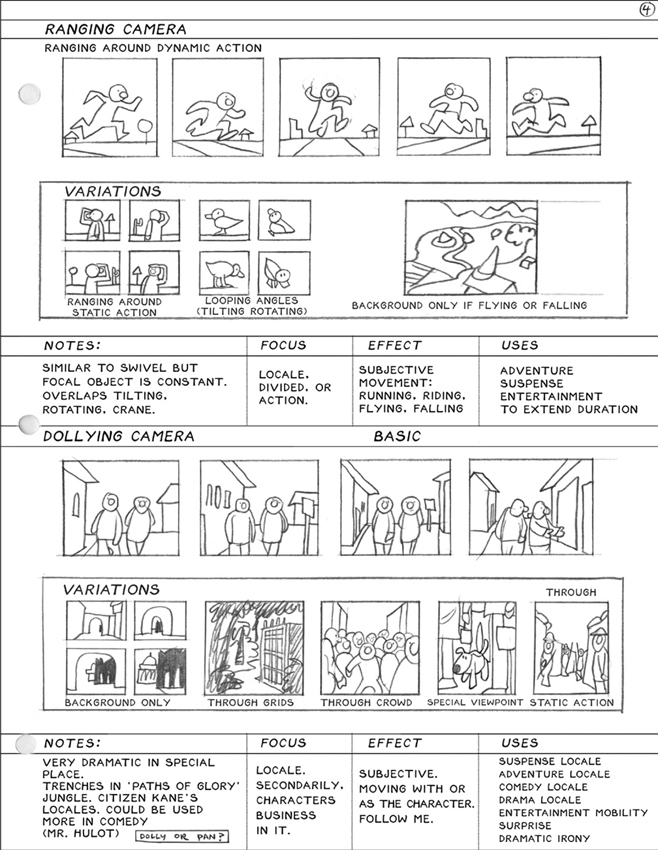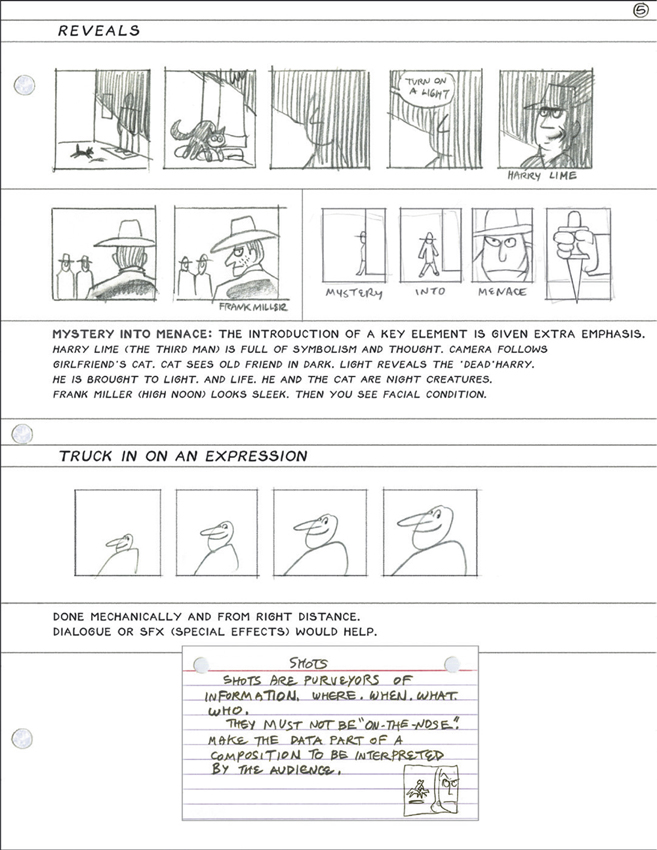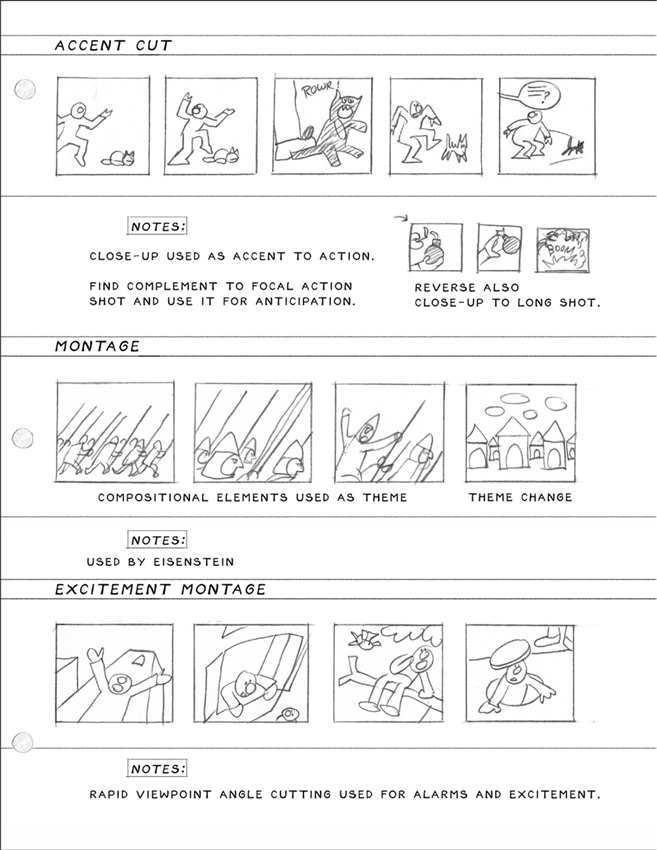
The issue is not how to show everything.
It is what to show as a part that will cause the viewer to imagine that there is an everything.
The Scene is a segment of the told or seen story. The “untold” parts take place between the scenes. Each scene is a subdivision of The Act and is a mini-experience that moves the story forward. A script can contain any number of scenes but many films have approximately thirty. An illustration or cartoon is essentially one scene.
Setting the Scene: The Place
The length of a scene is determined by a change of place or time.
• The place we go to is a place where something important occurs. We change scenes to follow the shifting of our interest.
• Film demands that we go to all places where something important occurs. It is “dangerous” to refer to an important event without showing the event.
• The correct choice of place is one where the character of the place adds to the events. If the choice of place is indifferent, the character of the place adds nothing to the events. If the choice of place is faulty, the character of the place contradicts events.
Character of place:
1. The Type: (Ship cabin, guardroom, tavern).
2. The Kind: (Crowded, luxurious, shabby, austere).
3. The Purpose: (Factory to manufacture goods, jail to imprison).
4. The Relation to One or More Persons: (The sanctum of the enemy, one’s own room).
5. The Location: (Tavern on the waterfront, shack in the desert).
Effects of choice of place:
1. Can influence the action; availability of props or lack of props in a given place determines how events happen.
2. Kind of place can characterize the owners: (Ostentatious, newly rich, slovenly).
3. Contradiction of place and action can create comedy effects: (Whispered talk on noisy subway, disorderly roughhouse in an orderly place such as hospital, courtroom, concert, vaudeville act in a cemetery).
4. Distance of one place from another influences the amount of time needed for persons to get there.
5. Place may foreshadow or symbolize the action.
A. Discovery of missing person: (empty stairs, empty house).
B. Person is hurt, as revealed in different places:
i. Police station—suggests criminal prosecution.
ii. Hospital—suggests condition.
iii. Person’s home ground—suggests change of conditions.
iv. Happy place—tragedy heightened by contrast.
6. Action individualized by character of place:
A. Conflict or evasion is realized differently in hotel lobby, auto parking garage or bakery.
The place has:
i. Exits—doors, windows, chutes, skylights, trapdoors, panels.
ii. Levels—Ramps, fire escapes, basement, attic, roof.
iii. Props—Tools, furniture, housewares, décor.
iv. Atmosphere—Lighting, noise or quiet, busy or not.
v. Residents—Workmen, Permanents and transients, animals.
vi. Hiding places—Rooms, boxes, jars, nooks.
B. Provides more material for action AND
C. Place is more vividly portrayed.
7. Atmosphere: A place frequented or used by a distinct group or class of people.

Useful Places for Comedy Disruption
Some places that are orderly and formal are ripe for comedy disruption or comic relief in a serious film. These are places that deal with danger, fragility, value, concentration, cleanliness, precision, quiet and vanity.
1. Hospital.
2. Courtroom.
3. Concert—Audience, pit, backstage, onstage.
4. Airport control tower.
5. Cockpit of aircraft.
6. Bridge of ship.
7. Any sporting event.
8. Any tournament—chess, jousting, bridge, pool.
9. Church service, wedding, funeral.
10. Army drill, inspection parade, service comedy.
11. Any line up or “queue”—customs, tickets.
12. Police line-up.
13. Any place of elegance—restaurant, high tea, lawn party, banquet, testimonial.
14. Kitchen, bakery, dishwashing.
15. Any manufacturing place—assembly line, foundry, food, clothing, plastics, glass.
16. Any place to do with money—casino, bank, mint, armored car, stock exchange.
17. Museum or exhibition.
18. Days of old—The Court, monastery, Inquisition.
19. Library, lecture, classroom.
20. Research lab.
21. Places or situations requiring stealth.
22. Courting, sex, glamour.
23. Creating art—portrait, model, sculpture, music, dance, play.
24. Fashion show, beauty contest, beauty parlor, exercise.
“Excuse me! Pardon me! Let me by, please…”
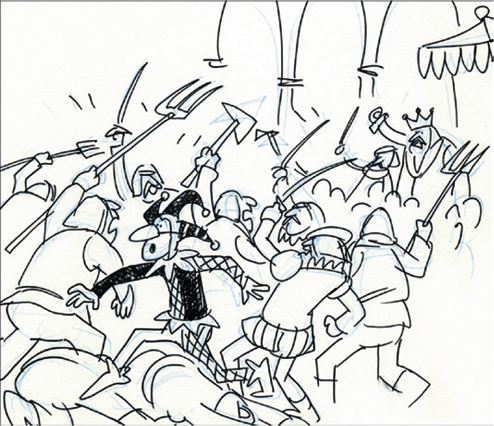
THE SCENE—ATMOSPHERE

THE SCENE—VIEWPOINT
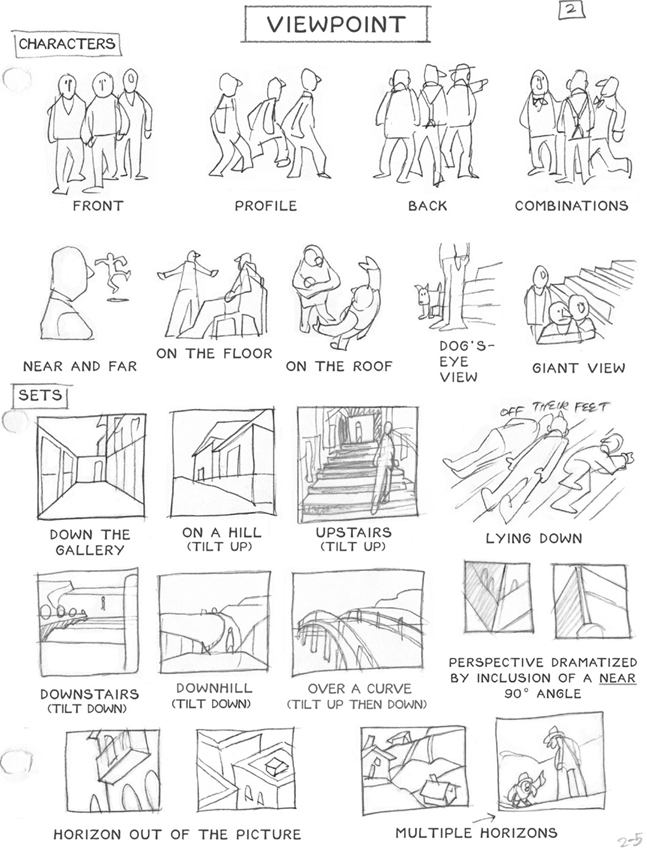
THE SCENE—PERSPECTIVES 1
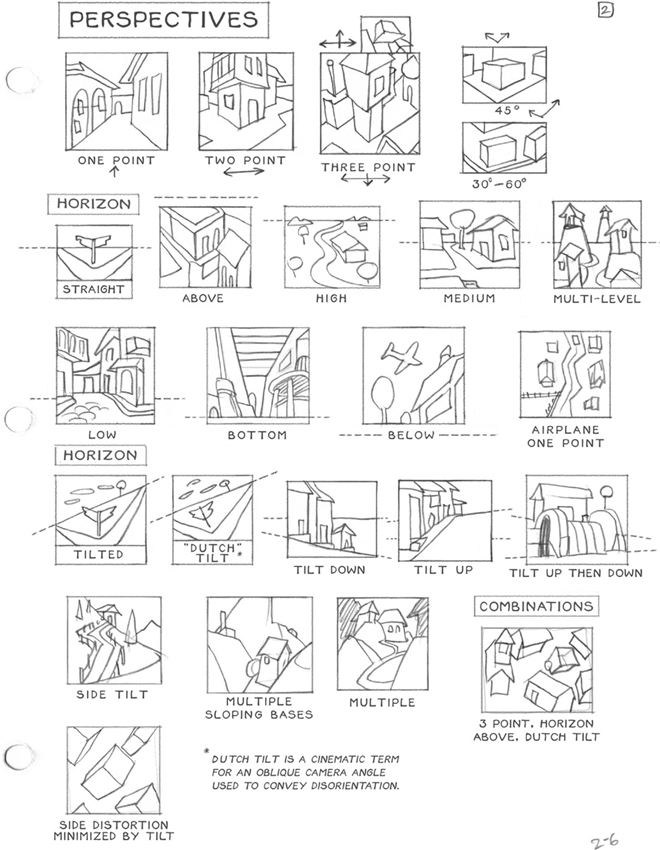
THE SCENE—PERSPECTIVES 2
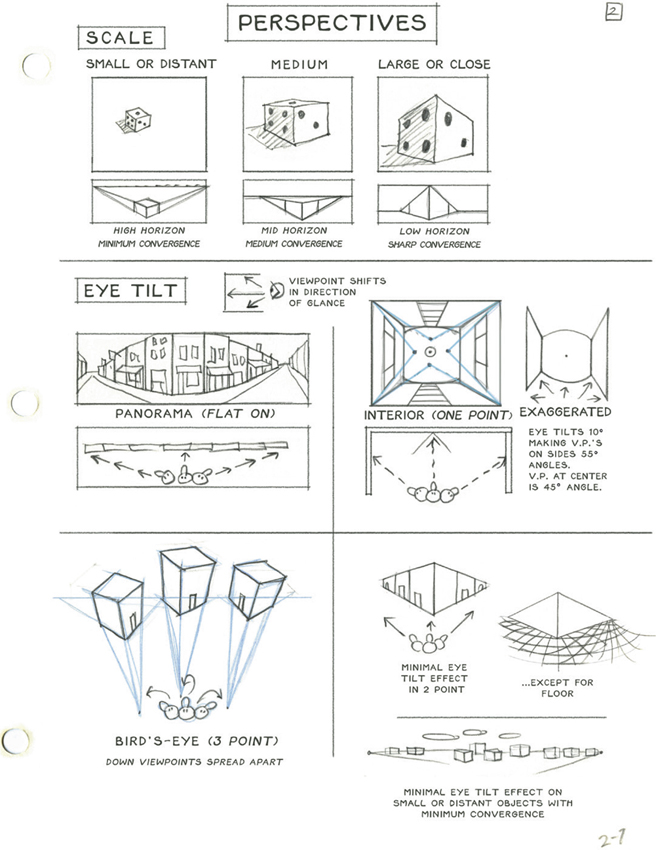
INTERIORS—These analytical sketches based on Dean Cornwell illustrations demonstrate the dynamic perspective produced by using corner angles.

Every Shot is Subjective
There are only a few possible ways to show pictorial locales. Decide which suits the action best.
Examples
The main ways to treat master shots are four-square (theater frame), pictorial and cropped. The type of pictorial in the graphics suggests the sort of tale, flashback or song to be done.
